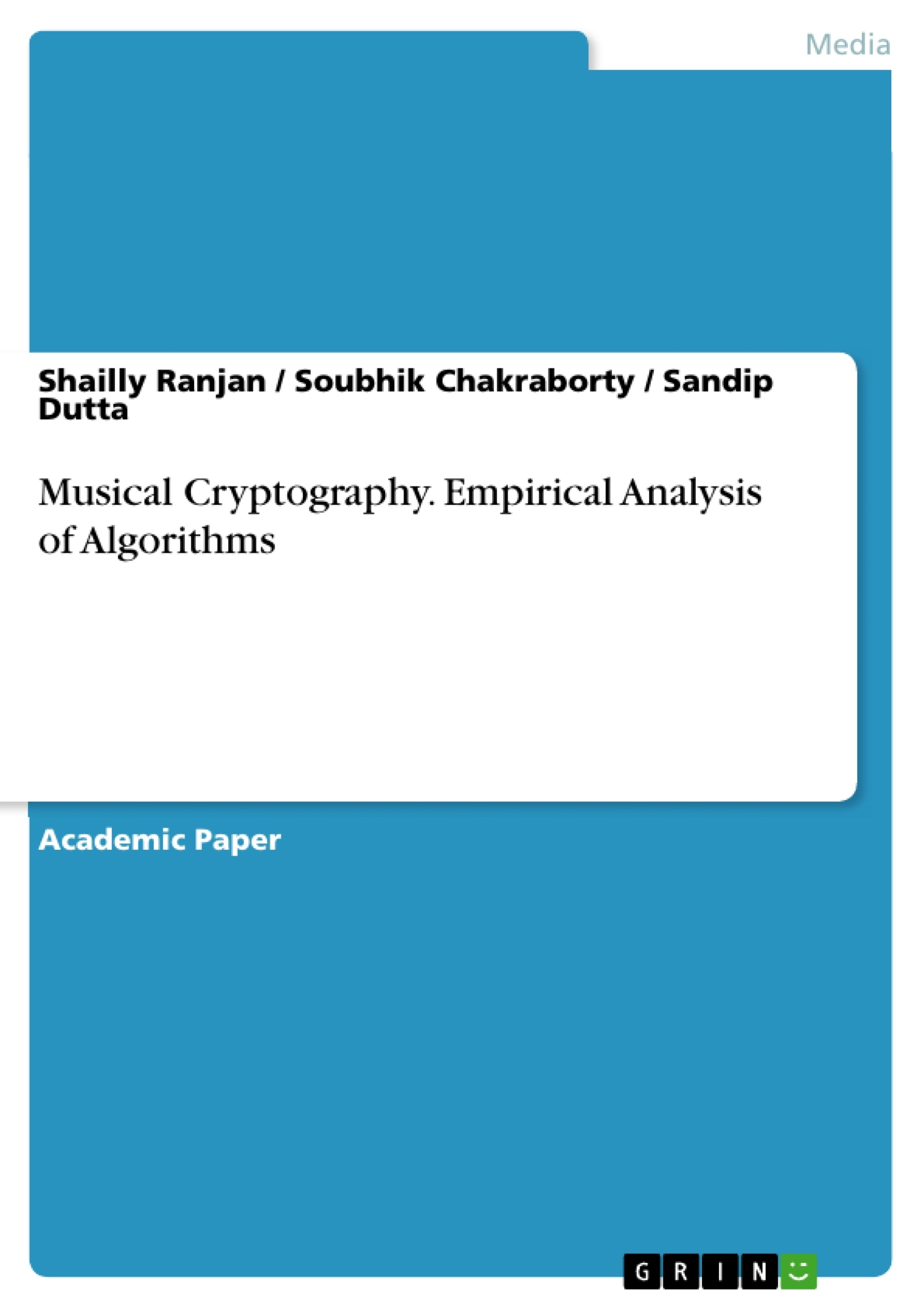With an onset of electronic commerce and portable devices for communication, cryptology has become an exceedingly important science in the present day. The diversity of applications in which crypto-algorithms have to operate have increased and hence the requirement for the efficient algorithms have grown. Confidential information of a government or private agency or department is secured through the use of Cryptography.
Musical properties, for example, notes of which the music is made are not consistent and shift from one arrangement to another. Same tune played by various composers shows a variety in the succession of notes utilized along with different qualities of a musical organization, for example, term of each note and the recurrence at which each note is played. Such a variety can be utilized to encode the message. In this work, we have joined the utilization of Hindustani (North Indian) melodic notes to encode messages and used this method on three ragas to test the robustness of the algorithm with different input size. We have utilized a semi-natural composition procedure to produce note successions of Indian music which would then be able to be utilized as a device for message stowing away. This from the outset place guarantees that the message is avoided the interloper and second it gives another irregular arrangement of notes each time same message is sent. So the very motivation behind a Cryptographic calculation is served. The scrambled message as melodic notes is at that point sent to the planned beneficiary as a melodic structure which helps in opposing the gatecrasher of detecting any classified data that is being sent over the correspondence channel.
Table of Contents
- INTRODUCTION
- CRYPTOGRAPHY
- TYPES OF CRYPTOGRAPHY
- SYMMETRIC KEY
- ASYMMETRIC KEY
- HASH FUNCTIONS
- MUSICAL CRYPTOGRAPHY
- HINDUSTANI MUSIC
- LITERATURE SURVEY
- RAGAS
- AAROH & AVROH
- VADI & SAMVADI
- DEERGHA & ALPA NOTES
- NOTES
- WESTERN MUSIC NOTES
- RAAG BHEEMPALASI
- RAGA BAGESHREE
- RAGA MALKAUNS
- RAGA YAMAN
- METHODOLOGY
- SEMI‐NATURAL COMPOSITION
- MARKOV CHAIN
- TRANSITION PROBABILITY MATRIX (TPM)
- SEMI‐NATURAL COMPOSITION ALGORITHM (SNCA)
- BAGESHREE RAGA
- ENCRYPTION
- BHEEMPALASI RAGA
- ANALYSIS OF RAGA
- EMPIRICAL ANALYSIS
- BAGESHREE RAGA
- BHEEMPALASI RAGA
- MALKAUNS RAGA
- IMPLEMENTATION AND RESULTS
- THEORETICAL ANALYSIS
- EMPIRICAL ANALYSIS
- EXPERIMENTAL RESULTS
Objectives and Key Themes
This paper focuses on the empirical analysis of algorithms used in musical cryptography, particularly emphasizing the Semi-Natural Composition Algorithm (SNCA). The paper aims to demonstrate how musical elements, specifically Hindustani ragas, can be utilized as a means of encryption. It aims to show the effectiveness and robustness of the SNCA algorithm for encrypting messages using different ragas and varying input sizes.
- Musical Cryptography as a security method
- Analysis of SNCA algorithm for raga-based encryption
- Empirical evaluation of SNCA performance with different ragas
- Assessment of encryption and decryption time complexities
- Potential applications of musical cryptography in various sectors
Chapter Summaries
- Introduction: The chapter introduces the concept of cryptography and its importance in the modern digital world. It explores different types of cryptography, including symmetric key, asymmetric key, and hash functions. This section also introduces the concept of musical cryptography and its application in Hindustani music.
- Literature Survey: This chapter provides an overview of previous research and techniques used in musical cryptography. It discusses historical examples of using music for cryptographic purposes and highlights relevant studies on algorithms and methods employed.
- Ragas: This chapter delves into the concept of ragas in Hindustani classical music. It explains key aspects of ragas, such as Aaroh and Avroh, Vadi and Samvadi, and Deergha and Alpa notes. It also provides detailed descriptions of four specific ragas: Bheempalasi, Bageshree, Malkauns, and Yaman, outlining their characteristics and musical notes.
- Methodology: This chapter introduces the semi-natural composition method and its underlying principles. It discusses the use of the Markov chain and its importance in generating musical sequences. The chapter then delves into the Semi-Natural Composition Algorithm (SNCA) and explains how it is used to create note sequences for encryption.
- Analysis of Raga: This chapter presents the empirical analysis of the SNCA algorithm applied to three different ragas: Bageshree, Bheempalasi, and Malkauns. It includes detailed tables showing encryption and decryption times for various input sizes. The chapter also provides graphical representations of the runtime analysis for each raga.
- Implementation and Results: This chapter describes the implementation of the SNCA algorithm in MATLAB and outlines the experimental setup and results. It analyzes the theoretical and empirical complexities of the algorithm and presents the findings of the study. The chapter also discusses the effectiveness of the SNCA algorithm in achieving security goals like confidentiality and authentication.
Keywords
The primary keywords and focus topics of this text are musical cryptography, Hindustani music, ragas, semi-natural composition, SNCA algorithm, encryption, decryption, empirical analysis, and runtime complexity. This research focuses on utilizing Hindustani ragas to create a robust and secure cryptographic method, analyzing the performance of the SNCA algorithm for different ragas and input sizes.
- Quote paper
- Shailly Ranjan (Author), Dr. Soubhik Chakraborty (Author), Sandip Dutta (Author), 2020, Musical Cryptography. Empirical Analysis of Algorithms, Munich, GRIN Verlag, https://www.grin.com/document/939103



